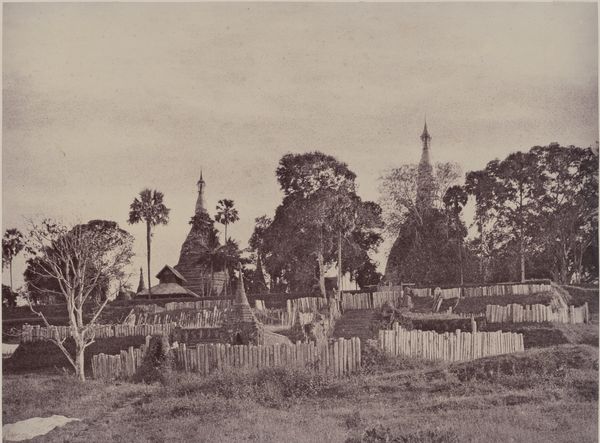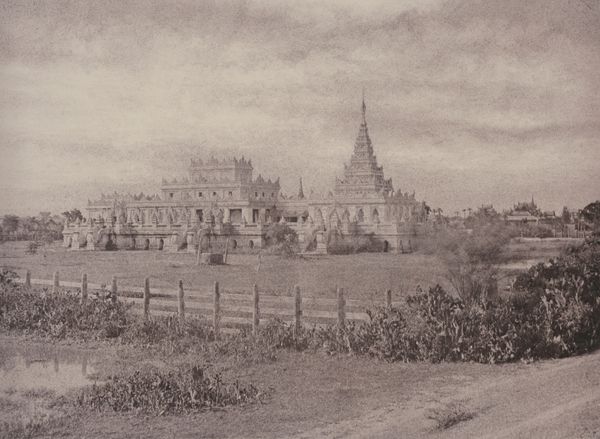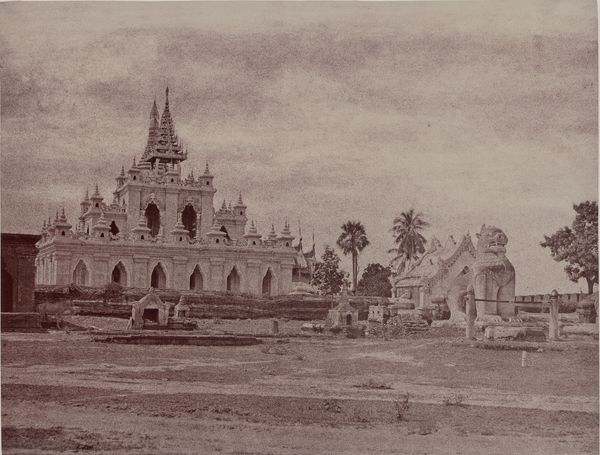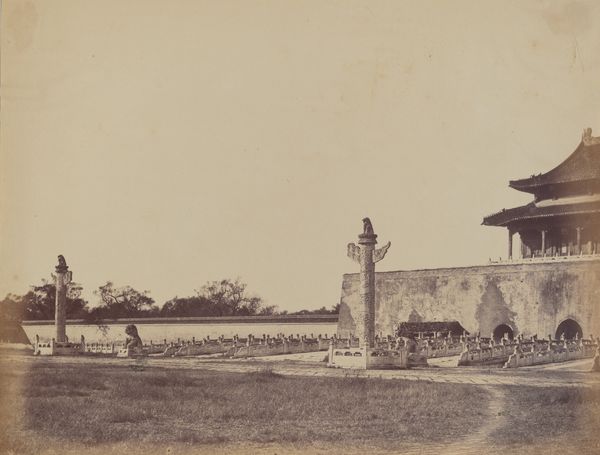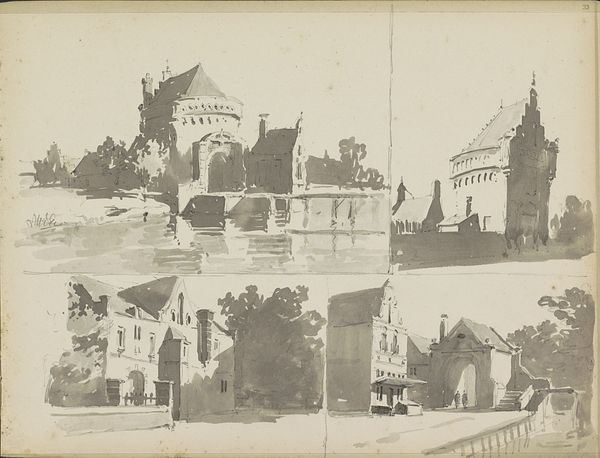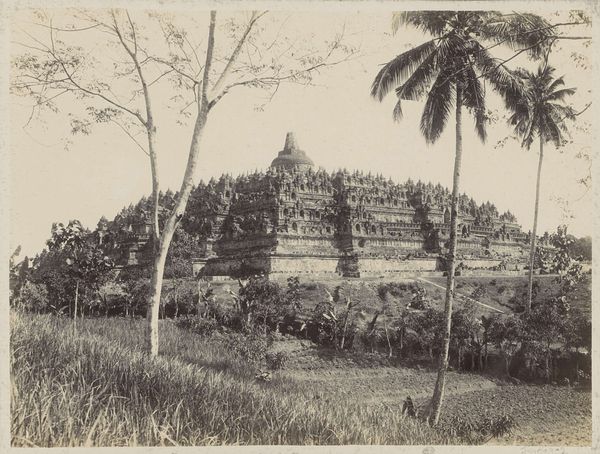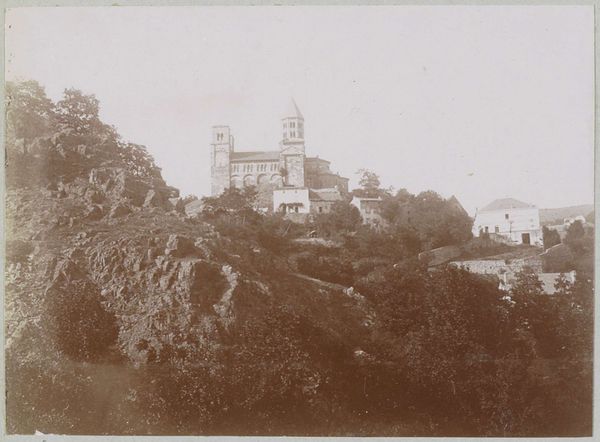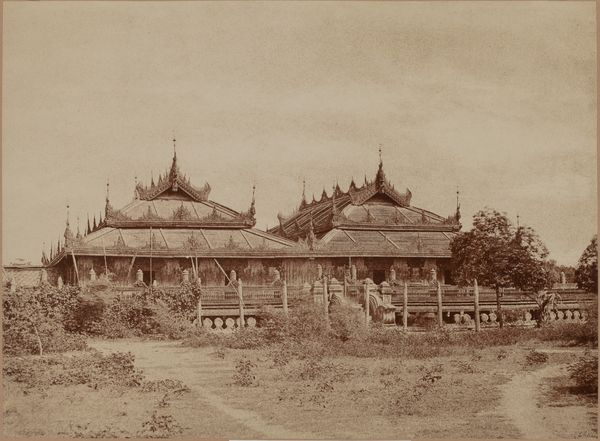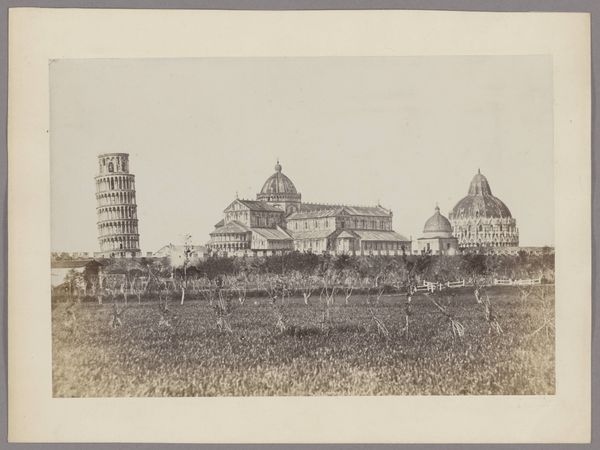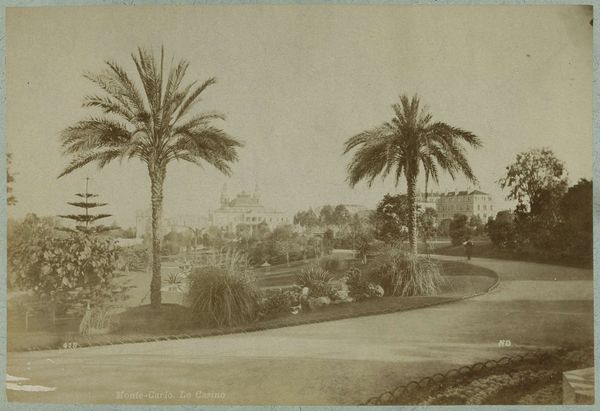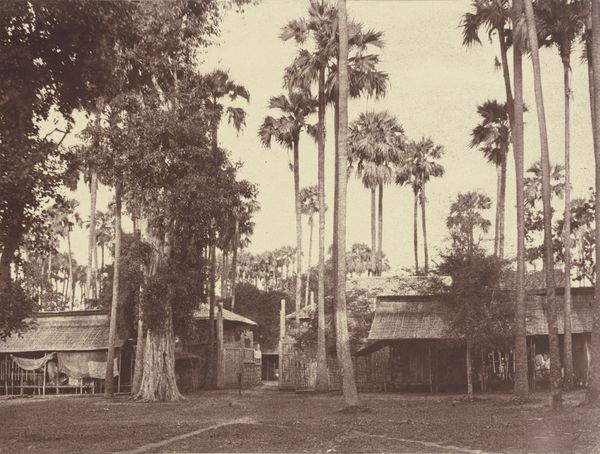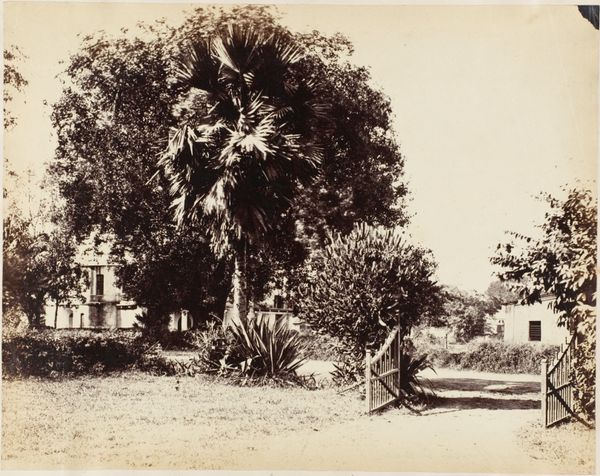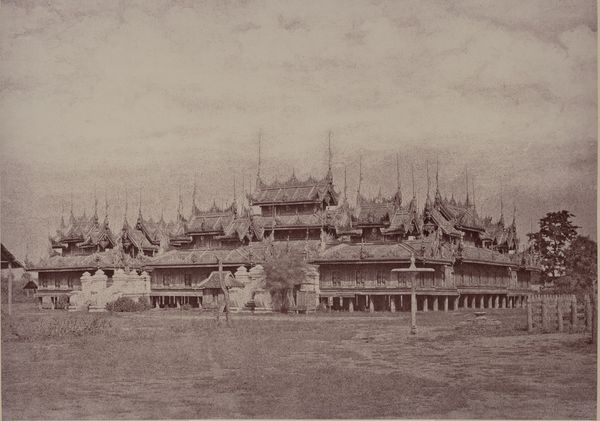
photography, gelatin-silver-print
#
asian-art
#
landscape
#
photography
#
gelatin-silver-print
#
monochrome photography
#
monochrome
Dimensions: image: 26 × 34.6 cm (10 1/4 × 13 5/8 in.) mount: 45.7 × 58.3 cm (18 × 22 15/16 in.)
Copyright: National Gallery of Art: CC0 1.0
Linnaeus Tripe captured "Amerapoora: My-au-dyk Kyoung" using the wet collodion process, a photographic technique that speaks to the colonial gaze of the 19th century. Tripe, as a photographer for the British East India Company, documented landscapes and architecture in India and Burma, now Myanmar. This image, with its careful composition, belies a complex intersection of power and representation. On one hand, there is Tripe’s artistic endeavor to document, and on the other hand, the orientalist project of cataloging and possessing knowledge about colonized lands. The architecture is framed by lush vegetation, creating a seemingly picturesque scene. But we should consider the social context in which it was taken. How does Tripe’s position as a colonial official influence what he chooses to capture? It invites us to reflect on the power dynamics inherent in the act of looking and documenting. What stories remain untold in this seemingly serene image? What does it mean to view a place through the lens of colonial ambition?
Comments
No comments
Be the first to comment and join the conversation on the ultimate creative platform.
